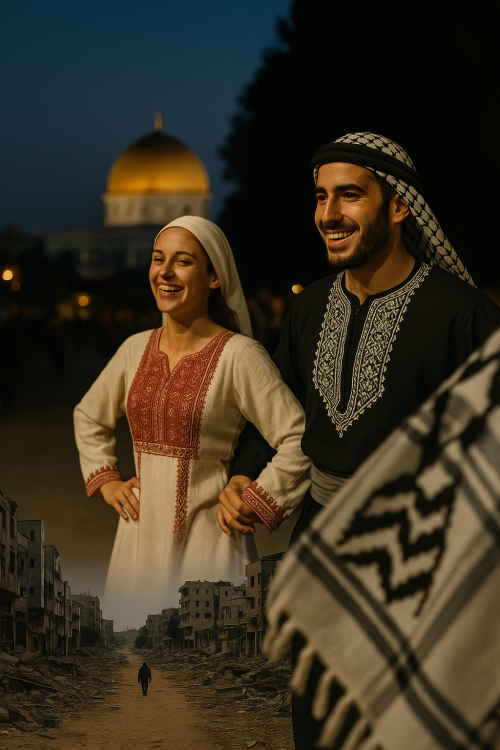In 2025, there is one sport that keeps appearing in conversations, social media feeds, and even corporate wellness programs — pickleball. Once a niche pastime invented on a summer afternoon in the 1960s, it has transformed into a global movement that’s reshaping how we play, connect, and stay healthy.
From retirees in Florida to teenagers in Berlin, from rooftop courts in Tokyo to beach tournaments in Lisbon, pickleball is everywhere. It’s not just about hitting a perforated plastic ball across a net — it’s about a new kind of lifestyle: social, inclusive, and irresistibly fun.
As Forbes recently put it, “Pickleball isn’t a sport — it’s a community revolution.”
But how did this humble hybrid of tennis, badminton, and ping-pong become one of the fastest-growing sports on Earth? Let’s dive into the story.
A little over two decades ago, social media began as a simple tool to share our lives—photos of dinners, weekend trips, and family gatherings. Today, it has evolved into a vast digital organism, feeding on our emotions, decisions, and desires. The platforms that once promised connection have become living ecosystems where algorithms predict not only what we like—but who we might become.
In 2025, the line between the real and the virtual has all but vanished. Social networks are no longer driven solely by human creators. Artificial intelligence now designs content, manages engagement strategies, and even creates personalities that never existed. These are not mere bots or faceless chat accounts. They are AI avatars—digital beings with crafted backstories, evolving styles, and emotional intelligence that mirrors ours almost too perfectly.
Welcome to the era where your favorite influencer might not be human. And you might not care.
For generations, the idea of the “American Dream” has been tied to owning a home, raising a family, and achieving financial stability in a safe, prosperous community. Yet in 2025, that dream looks different than it did a few decades ago. Rising housing costs in major metropolitan areas, unpredictable job markets, and growing safety concerns have pushed many Americans to rethink where — and how — they want to live.
While cities like New York, Los Angeles, and San Francisco continue to attract global attention, they’ve also become some of the most expensive and challenging places for average families. On the other end of the spectrum, smaller states and lesser-known cities across America are quietly building reputations as affordable, safe, and fulfilling places to call home.
In this three-part series, we’ll explore which U.S. states offer the best combination of safety, affordability, and overall quality of life in 2025. We’ll analyze factors such as cost of living, housing affordability, job opportunities, healthcare, education, and crime rates — all to find where the modern American dream truly thrives today.
In the next few years, digital marketing will face its most profound identity crisis yet.
As artificial intelligence continues to revolutionize content creation, personalization, and advertising, it is also erasing the thin line that separates what is real from what is synthetic.
Hyper-realistic AI images, voice clones, and emotionally persuasive videos generated by neural networks are already infiltrating social media and ad campaigns. The result? A digital ecosystem where authenticity becomes a luxury — and trust, a fragile currency.
Welcome to the age of the digital mirage.
Every October, the world slips into the same enchanting rhythm — a mixture of laughter and fright, costumed chaos and cinematic darkness. Yet Halloween in 2025 feels unlike any other year. Around the world, the festival has outgrown its pumpkin roots and become a mirror of culture, economics, technology, and even psychology.
What began centuries ago as Samhain — the Celtic harvest festival marking the boundary between life and death — has transformed into a global season of self-expression. And this year, it’s not just about ghosts or candy. Halloween 2025 has become an evolving statement of who we are: anxious, creative, connected, and forever fascinated by the unknown.
Discover how Frédéric Chopin’s legacy continues to shape the modern world through the 2025 International Chopin Piano Competition in Warsaw — where emotion, artistry, and even artificial intelligence redefine what it means to play the world’s most poetic composer.
Once upon a time, conversation was the heartbeat of human connection. We talked to understand, to comfort, to argue, to laugh, and to fall in love. Today, silence often fills the spaces where words once flowed freely. A couple sits across from each other in a café, eyes locked—not with one another, but with their screens. Friends meet for dinner, yet their hands reach for notifications before their forks. Parents scroll through feeds while their children wait for eye contact that never comes.
The smartphone, a miraculous device that promised to bring the world closer, has instead built invisible walls between us. It has redefined attention, rewired our brains, and reshaped the emotional language of our time. What we have gained in instant access, we have lost in depth, presence, and authenticity.
According to a 2024 Pew Research Center study, over 82% of adults admit to checking their phones during conversations, and 47% say they feel ignored when someone they’re with does the same. In essence, we’ve learned to coexist in parallel monologues — scrolling, reacting, and “liking” rather than listening.
This article explores the slow death of real conversation — how technology has silenced our social instincts, why it matters psychologically, and how we can reclaim what was once so natural: the human voice.
In October 2025, Netflix releases the third installment of its true crime anthology Monster, titled Monster: The Ed Gein Story. This new season dramatizes the life of one of America’s most infamous criminals—Edward “Ed” Gein—and explores how his grotesque acts cast a long shadow over horror cinema, pop culture, and our collective fascination with monstrosity. As the show invites viewers to peer into the darkness behind the legend, it raises a provocative question: are monsters born, or are they made?
In this article, we trace the real-life path of Ed Gein, situate his crimes in historical and psychological context, examine the production and narrative choices of the Netflix series, and reflect on its implications for the true crime genre. Along the way, we analyze how Monster: The Ed Gein Story positions itself within the lineage of horror, biography, and televised crime narratives—and what it hopes to say about guilt, trauma, and human culpability.
The story of wireless communication is one of constant reinvention. Every decade or two, society witnesses a generational leap forward, with new standards transforming the way people connect, consume, and create. The first mobile calls of the 1980s, the texting revolution of the 1990s, the mobile internet boom of the 2000s, and the rise of 5G in the 2020s all marked milestones in the history of global connectivity. As the world stands at the midpoint of the 2020s, a new buzzword has captured the imagination of policymakers, researchers, and industry leaders alike: 6G.
But what exactly is 6G, and will it truly arrive by 2026, as some optimistic forecasts suggest? The question has sparked heated debate. On one hand, major players such as South Korea, China, and Finland have already launched pilot projects, spectrum trials, and large-scale research initiatives. On the other, international standardization bodies like 3GPP and ITU emphasize that official technical specifications for 6G are unlikely to be finalized before 2030.
This article dives deep into the world of 6G, exploring its technological foundations, promises, and challenges, while critically analyzing whether 2026 is a realistic target for its arrival or simply a stepping stone toward a longer journey.
Sports have always been a testbed for human limits—strength, endurance, strategy, grace. In the 2020s, a new axis of competition emerged: code. Sensors, machine learning, telepresence, and simulation are rapidly transforming what we train, how we compete, and even who (or what) qualifies as an athlete. Drone pilots now race craft that pull double-digit g-forces through neon-lit gates. Humanoid robots sprint, hurdle, and play 5-a-side football in repurposed Olympic venues. And millions already “compete” inside photoreal virtual stadiums, where physics engines and network latency matter as much as muscle.
This feature explores three converging frontiers:
Drone racing evolving from niche spectacle to mainstream circuit with real-world utility.
Humanoid Robot Games, inaugurated in Beijing in August 2025, which offered the clearest glimpse yet of mechatronic athletics—including who won and what it looked like.
The Virtual Olympics: a credible, near-term format where digital twins, haptic suits, and AI officiating create global competitions that are fair, accessible, and astonishingly immersive.
Together, they foreshadow a decade in which stadiums are half-lab, half-arena—and “personal best” is also a software build.
Palestine is a land of deep history, vibrant traditions, and immense cultural resilience. For centuries, it has been a crossroads of civilizations, a birthplace of major religions, and a land cherished by its people. Yet, in the modern era, Palestine has also become a symbol of conflict, displacement, and struggle for self-determination.
As of 2025, the Israeli–Palestinian conflict has entered one of its most violent phases in decades. The war in Gaza, which erupted after October 2023, has reshaped the Middle East and continues to capture global attention. But beyond the frontlines and headlines, Palestine remains home to rich traditions, unique customs, and a resilient identity that persists despite unimaginable hardships.
This article explores Palestine in three dimensions: its history, its culture, and its present reality in the face of war.
The Road to 2030
The music industry has always been a mirror of society, reflecting not just our tastes but also our technological progress, our cultural battles, and our dreams. If the 20th century belonged to rock legends like The Beatles and Michael Jackson, and the early 21st century was shaped by pop icons such as Taylor Swift, Beyoncé, BTS, and Drake, then the next frontier is already knocking at the door: artificial intelligence pop stars, holographic concerts, and digital fandoms.
As we approach 2030, the central question emerges: will human musicians still dominate the global charts, or will AI-generated pop stars, unconstrained by fatigue, scandals, or contracts, become the new rulers of music?
This article takes you on a long journey into the future of music – a detailed look at megastars, cultural shifts, and technological revolutions that will decide who rules the charts by the end of this decade.













